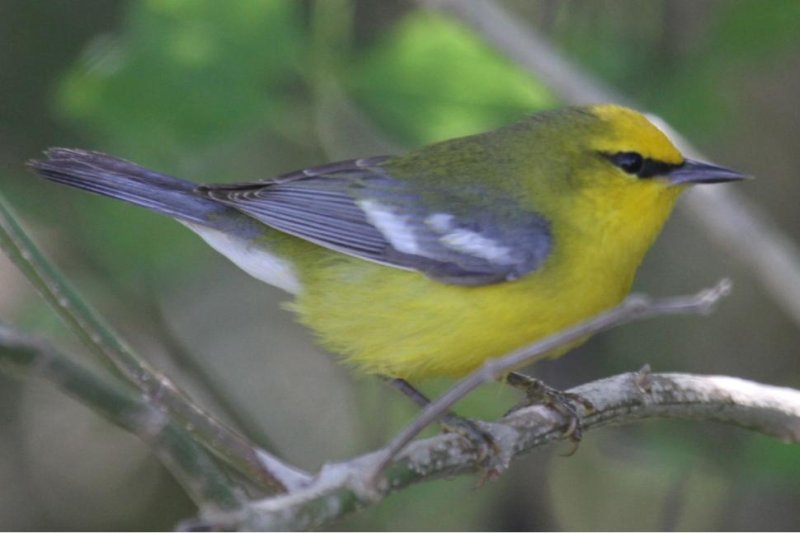Blue-winged warblers sometimes mate and form hybrids with golden-winged warblers. Photo by TonyCastro/
Wikimedia Commons
May 26 (UPI) -- Territorial aggression between different species was thought to be rare, but new research suggests the behavior is surprisingly common among perching birds, a group that includes songbirds and their closest relatives.
The new study, published Tuesday in the journal PNAS, suggests territorial aggression between species is driven by competition for breeding grounds and hybridization.
Hybrid species and species known to mate with other species are more likely to share common breeding grounds. The latest research showed the competition for these grounds inspires territorial aggression toward other species.
"We designed our analyses to be able to test this hypothesis -- that is, the hypothesis that competition for access to mates might drive the evolution of territoriality between species," lead study author Jonathan Drury, an assistant professor of ecology, evolution and the environment at Durham University in Britain, told UPI in an email.
"Combined with our results about resource competition, it appears that territorial aggression between species evolves for the same reasons that territoriality between members of the same species evolves," Drury said.
Using the observational data from previous surveys, Drury and his colleagues conducted a large-scale phylogenetic analysis of the distribution of territorial aggression among passerine birds.
"We find that interspecific territoriality is widespread in birds and strongly associated with hybridization and resource overlap during the breeding season," researchers wrote in their paper.
Scientists chose to focus on passerine birds, or perching birds, because they are the focus of most ornithological studies, and as a result, there is a lot of related observational data to be mined for fresh insights.
In analyzing the scientific literature on the breeding patterns of passerine species, Drury and his colleagues found roughly 28 percent of perching bird species form hybrids with one or more other species. That's a lot of birds with overlapping breeding territories, he said, which explains the prevalence of territorial aggression.
"Territorial behavior can include things like physical attacks, chases, displays, and territorial counter singing," Drury said. "In our study, we limited our set of observations to clear-cut accounts of competition for space, rather than for food -- so, behaviors like aggression at bird feeders weren't included."
Hybridizing species might get along better if there was more space to spread out, according to Drury.
"Human activities are causing many changes to the geographical distributions of species, and when individuals of a species reach a novel location, they are likely to interact behaviorally with individuals of other species," he said. "This research shows that behavioral interactions between newly arriving species and species that were already there are important to account for in conservation efforts."















